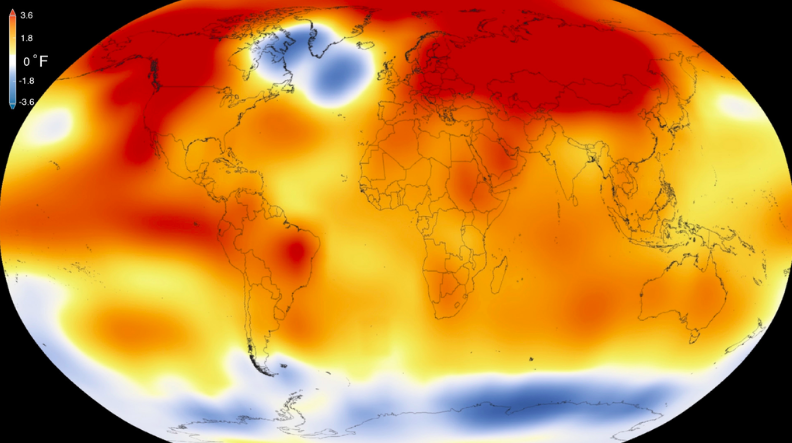The controversy over the fifteen-year so-called global warming “pause”, has left climate scientists bruised and somewhat baffled.
They never said that global temperatures would rise steadily with human-induced emissions without any ups and downs along the way. So why was anyone surprised when they didn’t? Now that 2016 is near certain to be a stonking record hot year, they plan to get their retaliation in first.
Give it a few weeks and there will be a flurry of end-of-year column inches and social media pixels proclaiming the hottest year on record. That might give extra impetus to efforts to mitigate carbon emissions. But the climate science community have realised they need to be out there explaining proactively that human influence is just part of the picture.
“We’ve got a golden opportunity right now to explain to people the difference between total warming and human-induced warming,” says Prof Myles Allen, head of the Climate Dynamics Group at Oxford University’s Department of Physics. It is important to do it now, he says, because, “nobody can turn around and say, ‘ah you’re just making excuses for the fact that it’s cooler than you expected’.”
Part of the reason 2014, 2015 and 2016 are so hot is because of a powerful El Niño event which came to an end earlier this year. But let’s be clear, these would have been record hot years even without El Niño. The underlying warming attributable to human activities stands at around 1C compared to pre-industrial levels. El Niño has added 0.2C on top at most.
But what the climate scientists are hoping to avoid in future, is the unnecessary confusion (some of it deliberately sown) that came with the so-called “pause” – the period between 1998 and 2013 when there was relatively little change in global average surface temperatures. That prompted headlines like the Daily Mail’s “Global warming stopped 16 years ago, reveals Met Office report” and comment pieces like this from Matt Ridley in the Wall Street Journal asking “Whatever happened to global warming?” The answer: it hadn’t gone anywhere.
Allen argues that the timing of the ill-fated Copenhagen climate summit which fell when global surface temperatures were marginally lower than when the Kyoto protocol was signed 12 years earlier was a contributory factor in its failure to live up to billing. Well perhaps. But Allen is undoubtedly correct that the bogus argument over the “pause” has diverted the attention of policy-makers from the really important question: how do we go about getting emissions down at a reasonable cost.
“It does raise the question of what’s going to happen at the next [big UN climate meeting]…when temperatures are likely to be no warmer than they were at the time of the Paris COP [Conference of the Parties],” says Allen.

Source: Prof Myles Allen
Let’s hope that world governments will take a more sophisticated view than simply looking at that year’s thermometer as the basis for action, but Allen argues that is why it is so important to prepare the ground now. He says that organisations like the Met Office and the World Meteorological Organisation should routinely release figures for the warming that can be attributed to human activity at the same time as they release global temperature figures.
This is all part of the climate science community realising that things that are obvious to them are not necessarily obvious to everyone else. “We have talked about variability for a long time,” says Prof Peter Stott who leads the climate science and attribution team at the Met Office. He cites scientific discussions of climate variability going back to the first Intergovernmental Panel on Climate Change report in 1990, although it is debatable how much of that hit the public’s radar. “Maybe it came as a surprise to us – it was so, sort of obvious if you like – that people were not aware that there was variability.”
And it is not just temperature. The numbers for Arctic ice extent are subject to similar variability and hence are vulnerable to cherry-picking. Like a ball bouncing down a hill, the general trend is downwards, but year to year, Arctic sea ice area sometimes goes up too.

Source: Dr Ed Hawkins
“We we need to communicate this ahead of time and not be distracted by temporary fluctuations in the other direction which will eventually reverse,” said Dr Ed Hawkins at the University of Reading’s Department of Meteorology.
Prof Richard Betts, head of climate impacts at the Met Office Hadley Centre, argues that climate scientists need to do more to prepare the ground for these temperature and sea ice fluctuations. “I would say that, arguably, we as a community… should have done a better job of communicating the fact that this could have happened. It seemed to take people by surprise but it shouldn’t have done.”
James Randerson is a journalist and editor. This piece was originally published on his blog.
